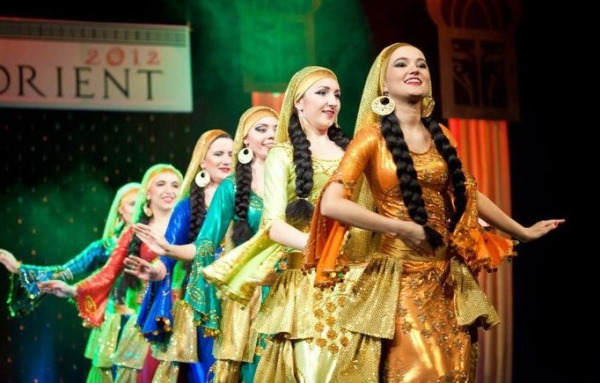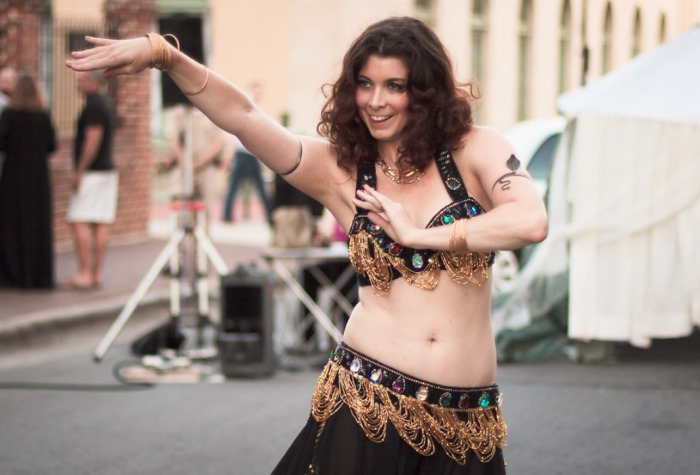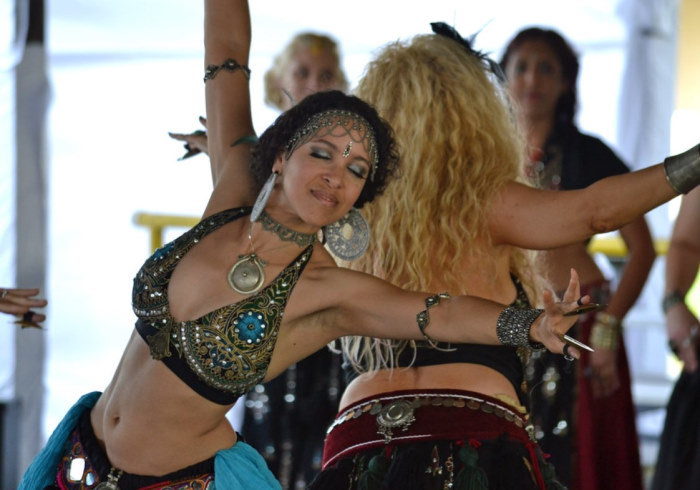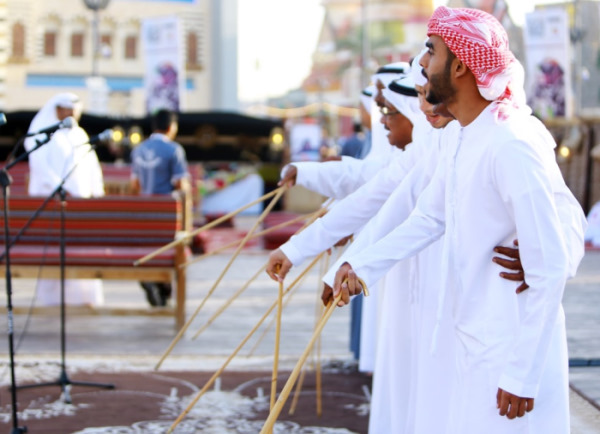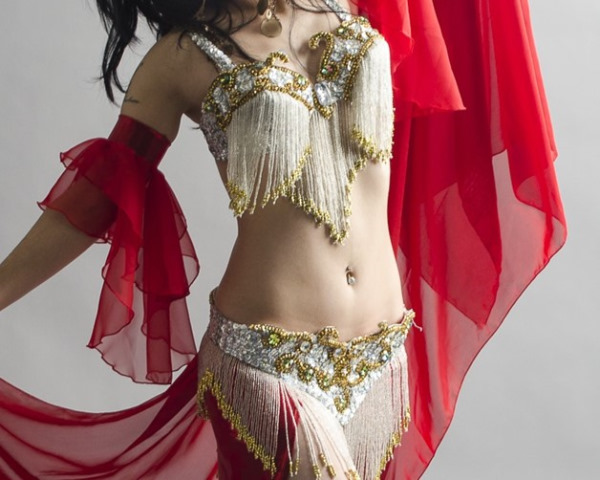One of the key cultural mainstays of the Arab world is all of the spectacular dances that they got. When the word “Arab dance” is mentioned, most people only think of belly dancing.
In reality, Arab dancing is more than just that. There are several Arabic dance styles, each with its history, characteristics, and moves.
In this article, we’ll be taking a closer look at Arab dancing as a whole. Then, we’ll examine even further down and present all of the dance styles that it’s got!
Table of Contents
What Is Arab Dance?
Simply speaking, a dance form is considered to be “Arabic” when it originates from the Arab world.
When people speak of Arab dances, they’re mostly talking about traditional folk dances of the Arabs.
However, there are many contemporary Arab dance styles, too (though they tend to not be as prevalent or popular as the classical types).
Origin & History
Dancing is a crucial aspect of life in the Arabic world. There are many examples of traditional folk dances being practiced in the region.
Some of the social dances include Dabke (دبكة) and Raqs Baladi (بلدي). Dancing is also used in religious ceremonies and rituals, like the Sacred dances.
When European nations invaded the Arab world in the 19th century, they brought information about the Arabic culture home.
This brought about a period of heightened interest in Europe of Arabic cultures, which includes folk dances and music.
People and artists who fell in love with the region’s vibrant culture called themselves Orientalists. Some examples include Jean-Léon Gérôme and Jean-Auguste-Dominique Ingres.
However, while Orientalism brought attention to the vibrancy of the region’s culture, it was also the reason behind the misconception of Arab dances being temptatious dances.
Many people – even these days – still think that Arab dance forms like belly dancing are performed for men’s pleasure by women.
That wasn’t true. At least, originally.
These dances were performed by women mostly in the company of other women and friends due to gender segregation in the Arab world. They were fun, high-energy social dances first and foremost.
But, that’s how it was in the beginning.
These days, with the export of Arab dancing to clubs and dance stages all around the world, these Arab dances can be both social dances, dances of temptation, as well as religious dances all at once.
Types
Arab Classic Dance
Arab classic dances are some of the oldest dance forms in this genre. They have existed ever since antiquity. Nevertheless, they’re still being danced in many places today and have evolved to keep up with the time.
Almeh
Almeh (عالمة) refers not to a specific dance style but to a group of women who are specially trained to sing and recite classical poetries, then reply to discourses from listeners in a witty way.
Almeh is typically only performed for high-class women in the comfort of their homes.
Baladi
Baladi (بلدي) means “of the country”. It is basically the Arab world’s analog to folk dances in the Western world. It’s a type of folk dance originating from Egypt, becoming popular in the 20th century.
Baladi is still very popular in the modern world.
The origin of the dance is exactly in its name: Egyptian farmers moved into cities from the countryside and danced in small rooms there.
Choreographically, it’s basically an off-shoot of belly dancing. Baladi is a lot more social by nature.
Dancers of this dance style tend to be more stationary than classical belly dancers. They also don’t move their arms a lot, focusing more on the hip area.
The dance is also described as looking very “heavy”, the dancer would have their feet on the ground most of the time. They also tend to look a lot more relaxed than classical belly dancers.
Belly Dance
Belly dance (قص شرقي, or Raqs sharqi) is, arguably, the representative of Arab dances in general. It’s the most well-known dance form of the genre.
Belly dancing is a form of expressive dance, where the dancer focuses on emphasizing the sophisticated movements of their torso.
But while the torso takes center stage, belly dancing also involves moving other parts of the body (typically in circular ways) to highlight the torso’s movement.
Contrary to popular’s belief, Belly dancing can be performed by both men and women. Dancers typically begin training when they’re young.
Check more: Why Belly Dancing Is Good for You?
Ghawazi
Ghawazi (غوازي) is similar to Almeh. It refers to a traveling troupe of female dancers who either perform solo or in small groups on local streets, in cafes, or in the Upper Egypt Mawalid.
The dance itself isn’t very elegant or flattering, with the moves mostly being very rapid vibrating motions of the hip area.
The term “Ghawazi” is sometimes used as an insult or a word accompanying sexual acts in the local culture.
Ouled Nail
The word Ouled Nail (أولاد نايل) first originates as a name for a dancing music genre.
Later, it was used to refer to a dance style in belly dancing, which involves a series of rapid, small foot movements accompanying strong, fast movements in the torso and hip.
Shamadan
Shamadan (شمعدان) is a type of dance prop that Arab dancers wear on their heads. It’s basically a large candelabrum. You’re bound to see a shamadan while watching Egyptian dances.
Historically, the Shamadan originates from old wedding processions in Egypt, called Zeffah.
These processions typically begin at night, winding through many roads and neighborhoods from the house of the bride’s parents to the house of the groom.
So, a Shamadan is used to light the way as well as to bring flairs to the festivity.
Arab Folk Dance
Folk dances are performed within the communities, on occasions like birth, wedding, death, or other social events. You may even see these dances during some religious celebrations.
Dabke
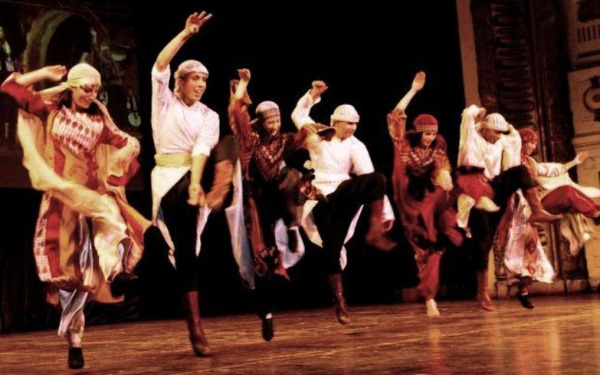
Dabke (دبكة) is an extremely popular form of Arab folk dance. It’s most often seen in the Levant region (Jordan, Palestine, Lebanon, and Syria) during joyous events like weddings.
The dance itself is a combination of circle and line dances. One Dabke “leader” serves as the head of the line of dancers, spinning back and forth to face the dancers and the audience.
This form of dance is best known for its foot-stamping moves. In fact, the term “Dabke” comes from the Arabic root word of Dabaka, which means “stamping of the feet”.
Deheyeh
Deheyeh (الدحية) is a Bedouin dance that’s performed in Palestine, Jordan, areas to the north of Saudi Arabia, Syria, and certain Gulf states.
Originally, Deheyeh was meant to serve as a morale booster for tribal soldiers about to enter battles.
Once the battles were finished and the soldiers emerged triumphantly, the dance would also retell the sequence of the battle and how victory was achieved.
Deheyeh has lost its war-like nature for a long time. These days, similar to Dabke, it’s mostly danced during joyous occasions.
Spiritual Dance
All spiritual dances (or Sacred dances) in the Arab world have to do with the largest religion in the area: Islam. More specifically, Sufism.
Many Sufis believed that dancing is a core part of Islam and was originally inaugurated by the great Prophet Muhammad.
Tanoura

Tanoura ( التنورة) is a very important part of every Sufi religious ceremony and ritual. It is a type of Egyptian folk dance of Sufi origin.
When performed, Tanoura is danced in groups and in circular patterns. These circular patterns reflect the philosophies of Islam.
Particularly, in Islamic teachings, the Universe seems to begin at one point and end at that exact point, making a circle. Tanoura was choreographed to mirror this philosophy.
The word “Tanoura” refers to the colorful skirts of the dancers. All of the colors found on a Tanoura dancer’s skirt reflect each “Tariqua”, or order of Sufi.
Zar
Zar (زار) is a kind of exorcism dance. It is believed that when zar is performed, all evil spirits and malicious visitors are warded off. That’s why it’s called zar, which means “visit”.
This dance is often practiced by women in Sudan and Egypt.
Arab Popular Dance
Ardah
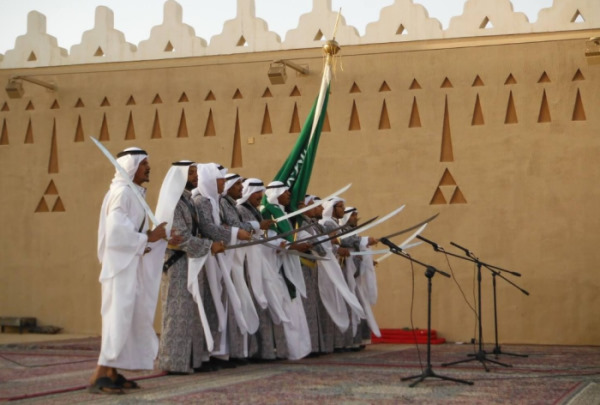
Ardah (العرضة) is a Saudi folk dance. Unlike most dance forms on this list, Ardah is performed exclusively by men.
In a performance, two rows of men stand facing one another. Each man may or may not hold in his hand either a sword or a cane. The whole procession is accompanied by spoken poetries and drum beats.
In the United Arab Emirates, the local form of Ardah is called Ayyalah.
The word “Ardah” is thought to have come from the Arabic word “ard”. It means “to show” or “to parade”. It’s so-called because Ardah was originally a dance that was used to bolster the morale of soldiers before battles (quite similar to Deheyeh).
Another purpose of Ardah is to publicly display the fighting strength and ability of the tribe.
Through the years, there have been many different variations of Ardah. They also have different names depending on the region. However, the purpose of the dance remained mostly the same all throughout.
Guedra
Guedra (كدرة) is a type of dance that originates from the deserts to the southwest of Morocco. Its purpose is to induce a state of higher consciousness, almost like a trance.
This is achieved with the dancer performing a series of hand movements, then swinging their head and torso up until an altered state of mind is achieved.
The special part about Guedra is that it is exclusively danced by single men and women. For the latter, sometimes, men from the audience could ask the female dancer for her hand in marriage.
Hagallah
Hagallah (هجاله) is often performed by the Bedouins from Mersa Matruh in the west of Egypt. It is a type of folkloric dance that’s performed during the date of the harvest.
Hagallah is performed during weddings and is also considered a girl’s coming-of-age dance.
The word “hagalla” means “slapstick”. Don’t let it fool you, though. There’s nothing comedic about this Middle Eastern dance. It’s a pretty serious business.
Khaleegy
Khaleegy (خليجي) performances can be seen throughout the Arabian peninsula. The word “Khaleegy” means “gulf” in Arabic and it is performed by women during weddings, local celebrations, or other social occasions.
The dance itself is high-energy and very joyous. The dancers perform their routines in a very expressive, gestural, and delicate manner that makes Khaleegy a good fit for events that need laughter or joy, like weddings.
Women dance together and the performance often starts with just one female dancer on the stage. As the dance begins, others begin to join her until they form a group.
Notably, the dancers wear a thobe (الثوب) – a type of traditional long robe, which they hold in front of them. Next, they begin to move their head, hands, and hair to the beat of the music.
The hair, in particular, is the main element in Khaleegy.
As they dance, the women will shake their long hair and make them “dance” by swinging them from side to side, back and forth, or in circles and other sophisticated patterns.
Recently, these techniques have been adopted by belly dancers and have become hugely popular.
Khaleegy is often performed using the Saudi rhythm (also called Khaliji or Adany rhythm). It’s a 2/4 rhythm with two heavy beats and one pause.
Rhythms change depending on the region. Since Khaleegy is danced throughout the Gulf area, there could be hundreds of different rhythms in total.
Schikhatt
The word Schikhatt (شيخات) is derived from the Arabic word “sheikha”, meaning an intelligent, experienced, and wise female sheikh (tribal leader).
Schikhatt is a type of classical Arabic dance commonly performed in Morocco. It is one of the very few Arabic dances that are erotic … but not in the way that most people think.
Schikhatt is performed by women for women. The dancer must be someone who’s very experienced in carnal knowledge.
She then danced and taught it to other women, commonly new brides, to show them how to move in their marital beds.
Yowlah
Yowlah (اليولة), also known as ayyalah, is a traditional dance of the United Arab Emirates (UAE). The dance is a variation of ardah. It involves spinning and tossing a rifle made from wood and plated with metal around.
The purpose is the same as the ardah: to showcase the strength of the tribe and motivate soldiers in the face of battles.
Costumes
Costumes are an important part of every Arab dance. Depending on the dance form and the region, the costumes are going to be different.
The most well-known Arab dance costume is the bedlah (بدلة, Arabic for “suit”).
An ensemble involves a form-fitting top or a bra, a full-length skirt, or harem pants tied up with a fitted hip belt. The bra and belt of the dancer could be decorated lavishly with gems, crystals, coins, beads, or embroideries.
The belt portion could either be worn as a separate piece of accessory or it could be sewn right into the skirt or the pants.
But that’s the modern iteration of the Bedlah. Earlier costumes were made from a full-length skirt, a light chemise, and a tight-cropped vest decorated with gems and all sorts of shiny decorative pieces.
Other than the two-piece Bedlah, there are full-length dresses as well. Dancers wear these for slower, more romantic Baladi-style dances.
Besides belly dancing, other forms of dance also come with their costumes. Khaleegy, for example, has the Arabic thobe as their costume.
Movies
If you would like to see a directed performance of Arabian dances, there’s no better way to do it than by watching some of these movies.
Whatever Lola Wants (2007)
“Whatever Lola Wants” follows the footsteps of a New York postal worker named Lola. Leaving the lights of New York City behind, she traveled to Egypt to take belly dancing lessons from a legendary dancer.
It’s a charming movie that’s packed to the brim not with just beautifully choreographed scenes about belly dancing, but also a lot of cultural information.
This movie will give you better insights into Arab dances as well as the region’s culture.
The movie is rated fairly well for having such a niche plot, with a 6.4/10 on IMDb.
The Belly Dancer (2006)
Directed by Marek Rozenbaum and released in 2006, “The Belly Dancer” is an Israeli gangster movie.
Besides packed action scenes, the movie also featured a lot of Turkish belly dancing scenes from the “femme fatale” character of the movie.
Although it doesn’t bring to the table quite a lot of belly dancing-specific or cultural information like “Whatever Lola Wants”, it’s still a great movie if you want to enjoy a few dancing scenes.
Famous Arab Dancers
- Alla Kushnir
- Syrena
- Maya Maghraby
- Amie Sultan
- Badia Masabni
- Taheyya Kariokka
- Amar Gamal
Songs
- Nemshi Wa Namshiah – Saber Rebai
- Allah Aleik Ya Seedy – Ehab Tawfik
- El Tannoura – Fares Karam
- Habibi Ya Einy – Nancy Ajram
- El Wawa – Haifa Wahbe
- Sidi Mansour – Saber Rebai
Competitions/Festivals
Arab Dance Schools
- Ahlam Academy of Middle Eastern Dance
- Arabesque Dance & Fitness Studio
- Isis and the Star Dancers Studio
- Bellydance Extraordinaire
FAQs
1. What Countries Are Arab?
All of the countries that are considered Arab are part of a region known as the “Arab world”. In total, there are 22 Arab states located in Western Asia, Northern Africa, Western Africa, and Eastern Africa.
These nations are part of an organization known as the Arab League, which makes it easier to tell which country is formally Arab and which one isn’t.
Any dance form that comes from these 22 countries can be called an Arab dance, as a catch-all term.
2. What Is the Arabic Wedding Dance Called?
Weddings are a very special occasion in Arabic culture. As a result, there are many different wedding dances that you’ll see in Arab countries. The most popular are Dabke and Khaleegy.
But, if you trace the list above, you’ll see many other dance styles that are performed at weddings, too.
Final Words
Arab dances are an excellent way to learn more about the cultures and the people of the Arab world.
Hopefully, this guide has been helpful to you in the tricky task of understanding the incredibly vibrant and sophisticated customs and traditions of the region.
Maybe you can call yourself a budding Orientalist now!
